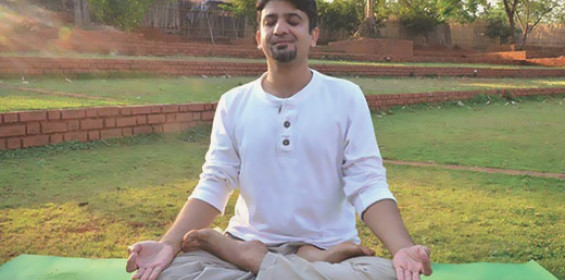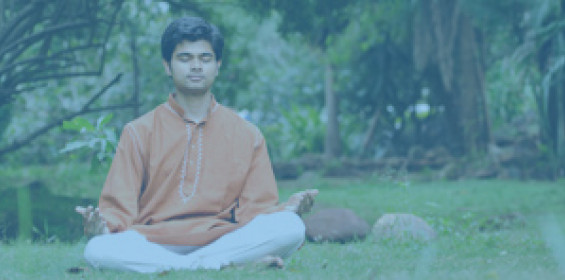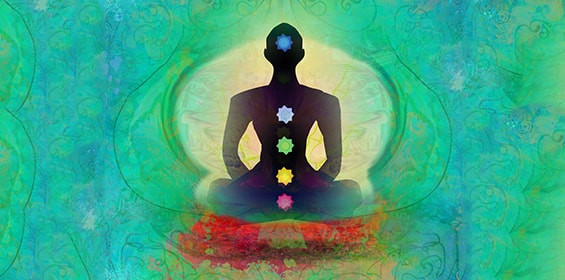Watching the waves lashing on the surface of the ocean is always a delight to relish. Indeed, a noise that nature creates from its depths, yet soothing for our souls, and meditative!

Meditation for stress relief
Life is a beautiful journey, more often perceived to be under the clutches of stress. Stress, typically, is the inability to respond to life situations, triggered internally or through external factors; reasons, any or many.
Stressors could be as simple as the laundry list of to-dos within a short span of time; or it could be because of susceptibility to illnesses or traumatic experiences that are beyond our control. We see people go through it in all shapes and sizes. Even thoughts or fears due to external conditioning could be one of the factors of stress.
The medical fraternity speaks of the impact of stress on different levels - physiological and psychological. Physical conditions could have an effect on the digestive, circulatory, and respiratory systems and impact the immune functions of the body, while emotional strains may cause confusion, anxiety, and depression depending on the level of extremities of stress that one is exposed to.
Whatsoever, the sooner such stressors are removed, the better it is. The fight or flight response triggered by our parasympathetic nervous system could affect our health, if stress becomes distress in the long run. So, it is important that we keep a watch on it before the *amygdala hijack happens, where the ‘feeling brain’ gets cut off from the ‘thinking brain’.

*Amygdala is that part of the brain that stimulates an emotional response, while the frontal lobes enable cognitive thinking. Stressors may cause the amygdala to trigger its fight or flight response. But, when the emotional quotient is high, it is quite under control and we respond to situations rather than react.
Astonishing indeed, when we read about the lifestyle of generations before us that seems to have been more peaceful and harmonious. Spiritual sadhana and meditative practices are proven to be the common thread that paved the way for a healthy lifestyle with an intuitive mind.
Adaptability, flexibility, just letting go, and being at ease with oneself helps balance the prana (the life force within the body) and brings a subtle sense of calm.
No wonder our rishis of yore have given us such profound wisdom to be imbibed through spiritual practices. Our consciousness is subtler than air and water; it can spread around and flow in all directions. Similar to how trees grow upward while still rooted through gravity, a few minutes of meditation helps elevate the level of prana in our body. Our breath then becomes rhythmic and the mind quietens, opening us to subtler intuitive realms, even when amidst the daily buzz of routine activities.
How does meditation for stress relief work
Scientific analysis of meditation states that when the subject of meditation and the object of meditation are nullified, there is only pulsation – a pure form of energy, a wave function that helps manifest through pure intention and focus; where all factors of stress are removed and what exists then, is the pure being within us, from where all solutions emerge.
The Eureka of Archimedes or the elevation of Newton happened in this space.

Albert Einstein, who is known to be the greatest of all scientists said, ‘I think 99 times and I find nothing; I stop thinking, swim in silence, and the truth comes to me!’
Meditation is that silence that relieves us of all stressors and puts us in touch with a profound sense of peace and inner joy.
Benefits of Meditation

A simple 20-minute journey to the core of ourselves brings unfathomable benefits which include
- Stress relief
- Regulation of blood pressure
- Better cardiovascular and immune health
- Reduced menstrual and menopausal issues
- Relief from headaches and migraines
- Enhanced flow of blood
- Decreased heart rate
- Balanced hormones
- Slower aging process
- Improved focus and concentration
- Increase in intelligence, intuition, and a spirit of innovation
- Boost in memory
- Enhanced creativity
- Better decision-making skills

- Improved self-esteem and self-acceptance
- Increased productivity
- Enhanced optimism
- Healthier perspectives
- Stronger will power
- Improved emotional stability
- Balanced relationships
- Harmony in body, mind, and spirit.
- Keeps one happy and in a joyful state of mind
Some quick steps to start with

- Find a quiet place.
- Switch off your cell phone; keep all electronic gadgets away.
- Do some progressive muscle relaxation and loosening exercises. They help to get rid of stress at the bodily level.
- A few rounds of deep breathing or pranayama, followed by Sudarshan Kriya takes you deeper into relaxation, both at the body and mind level.
- Then, sit comfortably in Sukhasana with your spine erect. If need be, use a support for your back.
- Now close your eyes; take a few deep, long breaths; and just let go.
Let Gurudev’s soothing voice take you inward to a peaceful state of meditation.
Gurudev Sri Sri Ravi Shankar says,
“The mind has two abilities – one is to focus and the other is to expand and relax. Expanding in that zero state of mind is meditation – a state where we become so strong, stable, solid, and yet so soft, that nothing can ever shake us. When there is no regret of the past, no want of the future, that moment is whole, complete and free of stress.
Meditation is living every moment totally with depth.
Learn how to meditate effortlessly in The Art of Living's Sahaj Samadhi Dhyan program.












































